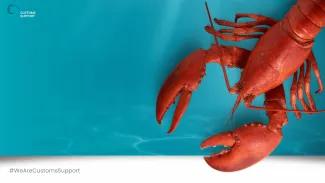Why customs needs to be different for lobsters and other live shellfish
When importing dead fish, you are required to present an IUU catch certificate during the import clearance process so that you can prove the catch is legal.
This is because illegal fishing wreaks havoc on local communities, fish populations, and the ecosystem as a whole. Therefore, it is important to ensure that illegal fishermen are unable to sell their catches so that they are deterred from impacting the environment for profit.
When importing lobsters and other live fish, you must also obtain customs authorisation. This is because there are more risks with the import of live animals, such as the spreading of disease or the illegal breeding of non-native species.
In the EU, you must ensure that your fish farm is authorised by the European Commission. In the UK, you must obtain authorisation from the Fish Health Inspectorate.
What documents do I need for importing lobsters?
When you are importing lobsters in the EU or the UK, you need supplementary documents to accompany the commercial invoice, packing list, and transport paperwork.
An Illegal, Unreported, and Unregulated (IUU) Catch Certificate is required to confirm the details of the catch, and must include:
- Vessel/farm name, flag, and licence number.
- Date of catch.
- The name of the validating authority.
- Description of catch: species, commodity code, Estimated net weight.
- Type of fish processing allowed on board.
(Note that this list is not exhaustive. Work with a customs consultant for your country of import to ascertain which details you need to include.)
For importing into the EU, a sanitary or health certificate is also required for importing lobsters to ensure that they are suitable for consumption.
If you are concerned that your shipment of lobsters may be rejected from the EU because of documentation, you can check the Rapid Alert System for Food and Feed (RASFF) for some of the common rejection reasons.
For the UK, your shipment of lobsters must be registered on the Import of Products of Animals, Food and Feed System (IPAFFS) no later than 72 hours ahead of vessel arrival, four hours ahead of rail arrival, or two hours ahead of road arrival.
There will also be changes to the presentation of live animals to UK customs with the Border Target Operating Model.
Did you know?
Customs Support has it’s own Lobster, and it can read! This is our pioneering document-reading software, which works alongside our EDI connections to help our declarants achieve more with digital customs clearances.
Looking to import lobster?
Customs Support can help you prepare your documentation and process your customs clearance anywhere in the EU or UK. Contact us for more information.














